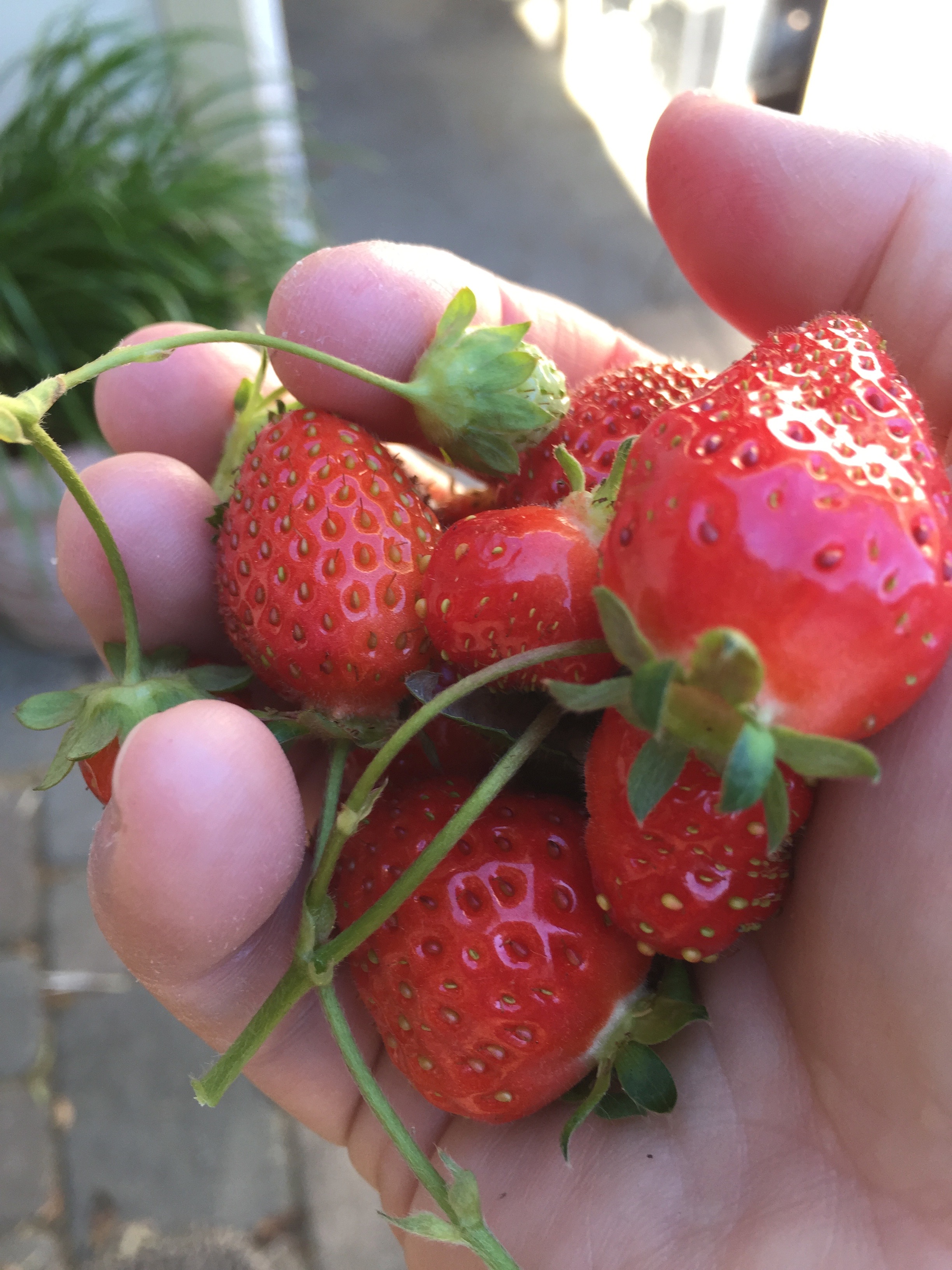As you know, I am a big fan of home-cooked dinners. Our garden harvests often dictate what we eat, but I'm also always looking for inspiration. I don't really enjoy having the same thing all the time (for some reason, I'm ok with it at breakfast time, but not at dinner). That means I am constantly looking at websites, magazines, and books to get new recipes. I thought I'd share a few winners here with you, in case you need some new ideas, too.
One website that I follow pretty avidly is Smitten Kitchen. Deb takes recipes from all kinds of different sources and reworks them to make them more streamlined, simpler, and easier for busy households. In the process, none of the interest, flavor, or health is lost. We've enjoyed many of her recipes and some are in heavy rotation. She recently posted a new one that was an enormous hit around here. "Sheet pan meatballs with crispy turmeric chickpeas" is definitely a recipe we will be making again. Spicy, but in the warm way, not the painful way, with lots of flavor (especially with a generous lashing of the yogurt sauce), we ate these as sandwiches, sort of like falafel. Delicious. And even better the next day for lunch.
I use so many of Deb's recipes that I decided it was only fair I should buy her newest book, so I did - and tomorrow night we are going to enjoy her Artichoke and Parmesan Galette. Yum!
I also recently purchased a Dorie Greenspan cookbook. I've respected her work for years, and decided it was time to actually own something that she'd written. So I bought "Around My French Table" and we've been enjoying recipes from there for a few months now. One of the best we've had is this one:
“Almond Flounder Meuniere (serves 4)
(although we used local Petrale sole instead of flounder)
2/3 C ground almonds
2 T flour
grated zest of one lemon
24 ounces sole
2 egg yolks, lightly beaten
cold salted butter, about 4-6 T
Whisk the ground almonds, flour, and zest together, then season with salt and pepper. Pat the fish filets dry. Using a pastry brush, lightly coat one side of each filet with beaten yolk. Then either press that side into the ground almond mixture, or spoon it on top and press into filet.
Heat a large nonstick skillet to medium. Add 2 T of butter and cook it till it turns light brown, about 3 minutes. Slip the filets into the butter (you’ll have to work in batches) nut-side down. Do not crowd. Cook for 3 minutes or so, until golden on bottom, then turn over. Add another T of butter to pan. Cook until the fish is opaque throughout, about another two minutes.
Keep previously cooked filets warm while you cook the rest.
Serve with lemon wedges, toasted sliced almonds, and chopped parsley, if desired.”
This was an incredibly simple way to cook this delicate fish, and really, really delicious. By the way, I keep my almond flour (basically just ground almonds) in the freezer until I need it. I do this with all my flours and cornmeals, so they stay fresh.
I'm also loving my new Lodge cast iron skillet (a birthday present from my parents). I've had a cast iron dutch oven for years, which I mainly use for baking bread, but I've always wanted a skillet too. We've made all kinds of things in it, from dinners to breakfasts. I made a wonderful savory Dutch Baby as a side dish for one dinner. So easy - just make a Dutch Baby like you normally would for breakfast, but omit the sugar and instead add herbs and parmesan. I made Toll House cookies for a bunch of teenaged boys who came over, and cooked them like a pie in the skillet - they were even more yummy that way. (I've made many, many chocolate chip cookie recipes over the years, trying to find the perfect one; I haven't been able to out-do the basic Toll House recipe.)
For a great winter soup, you really can't beat Pioneer Woman's Chicken and Dumplings. This is a soup that we never get tired of no matter how often we have it; it's certainly even more delicious the next day for lunch, if there is any left over. I usually simplify it a bit; because I often have broth already made, I just bake some chicken breasts in the oven and then shred those, instead of cooking a whole chicken, while using some of the stock I have on hand.
Ok, your turn: What have been your favorite meals this winter? Please share in the comments, so I can make them too!
































